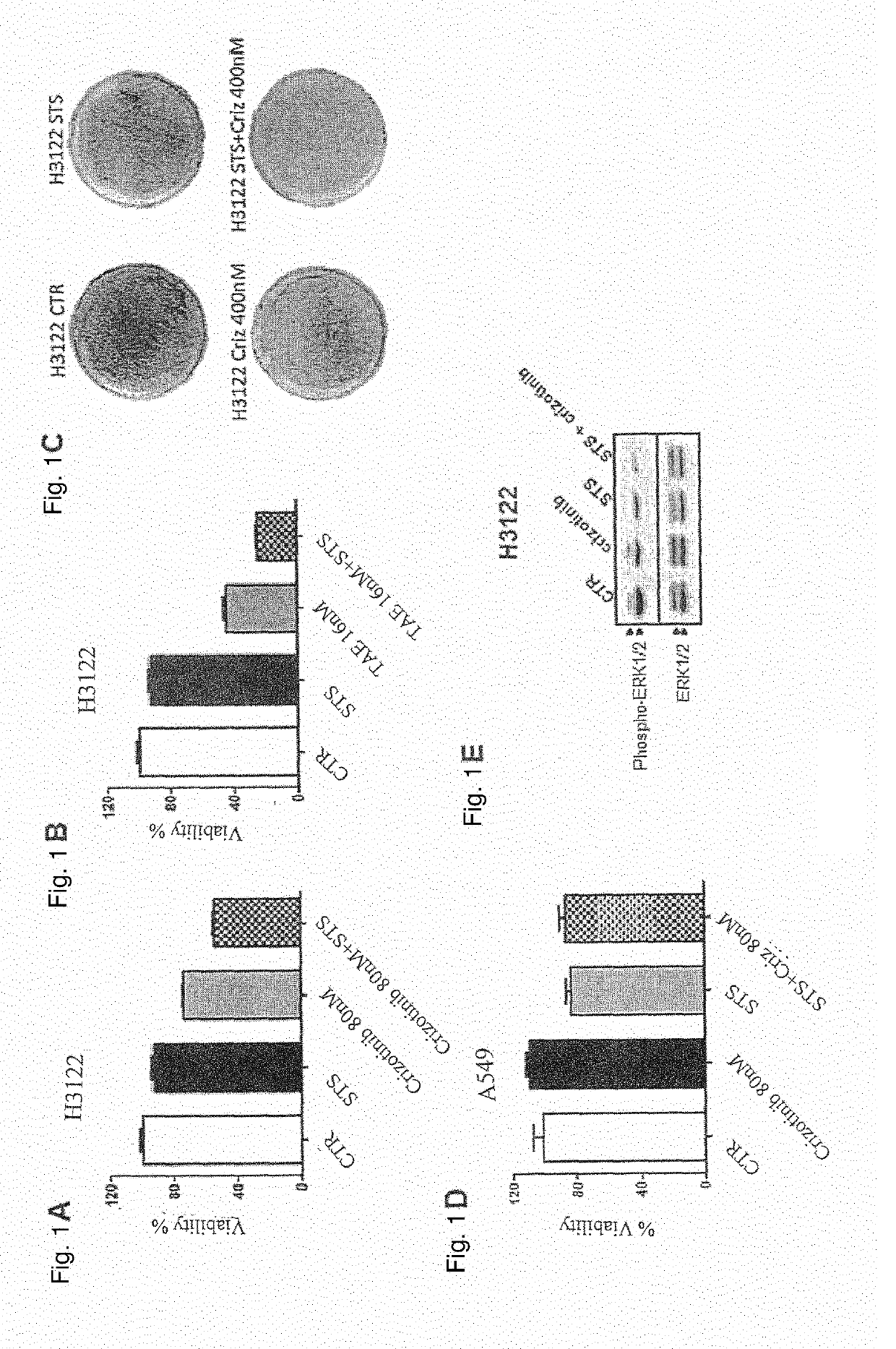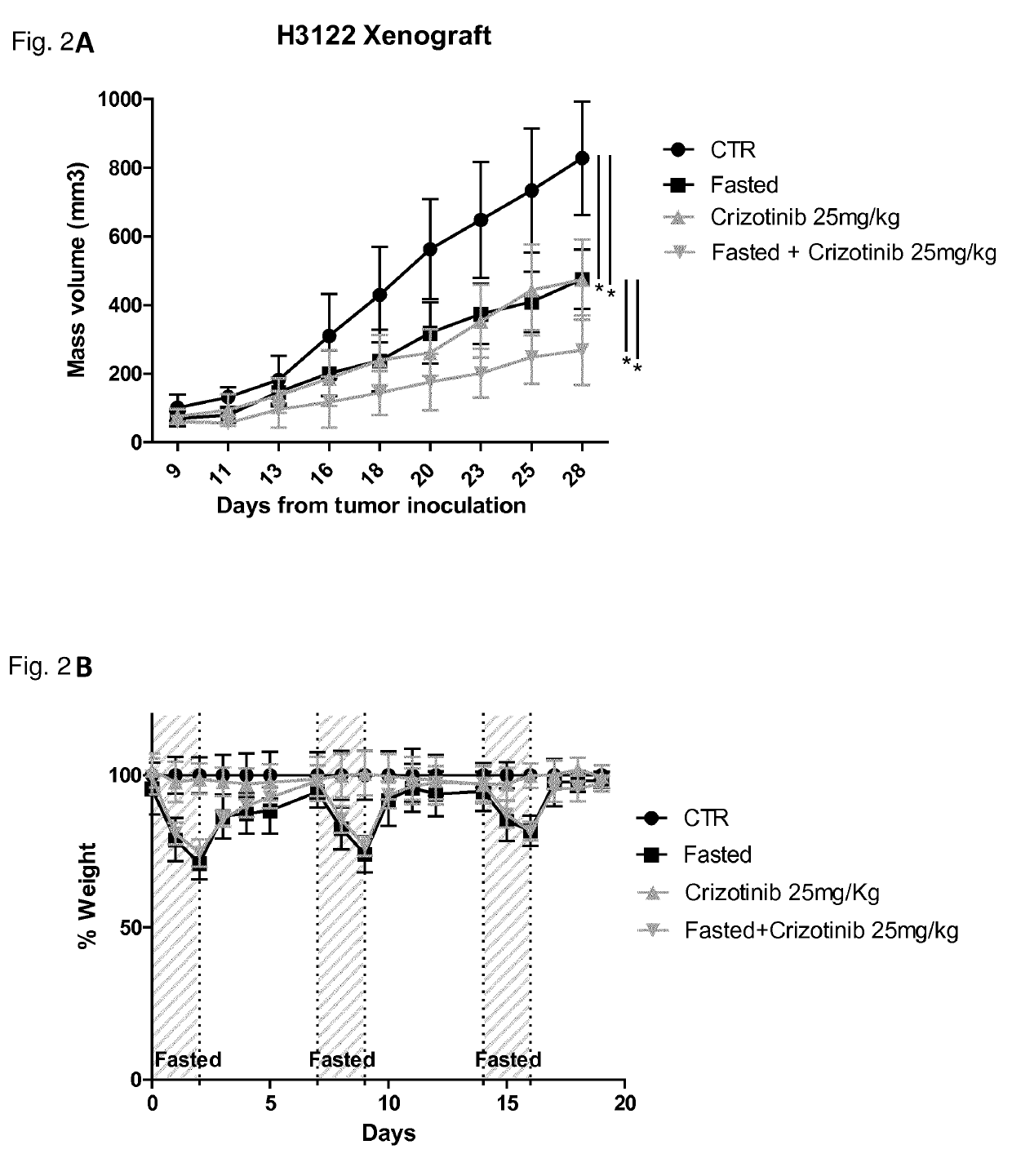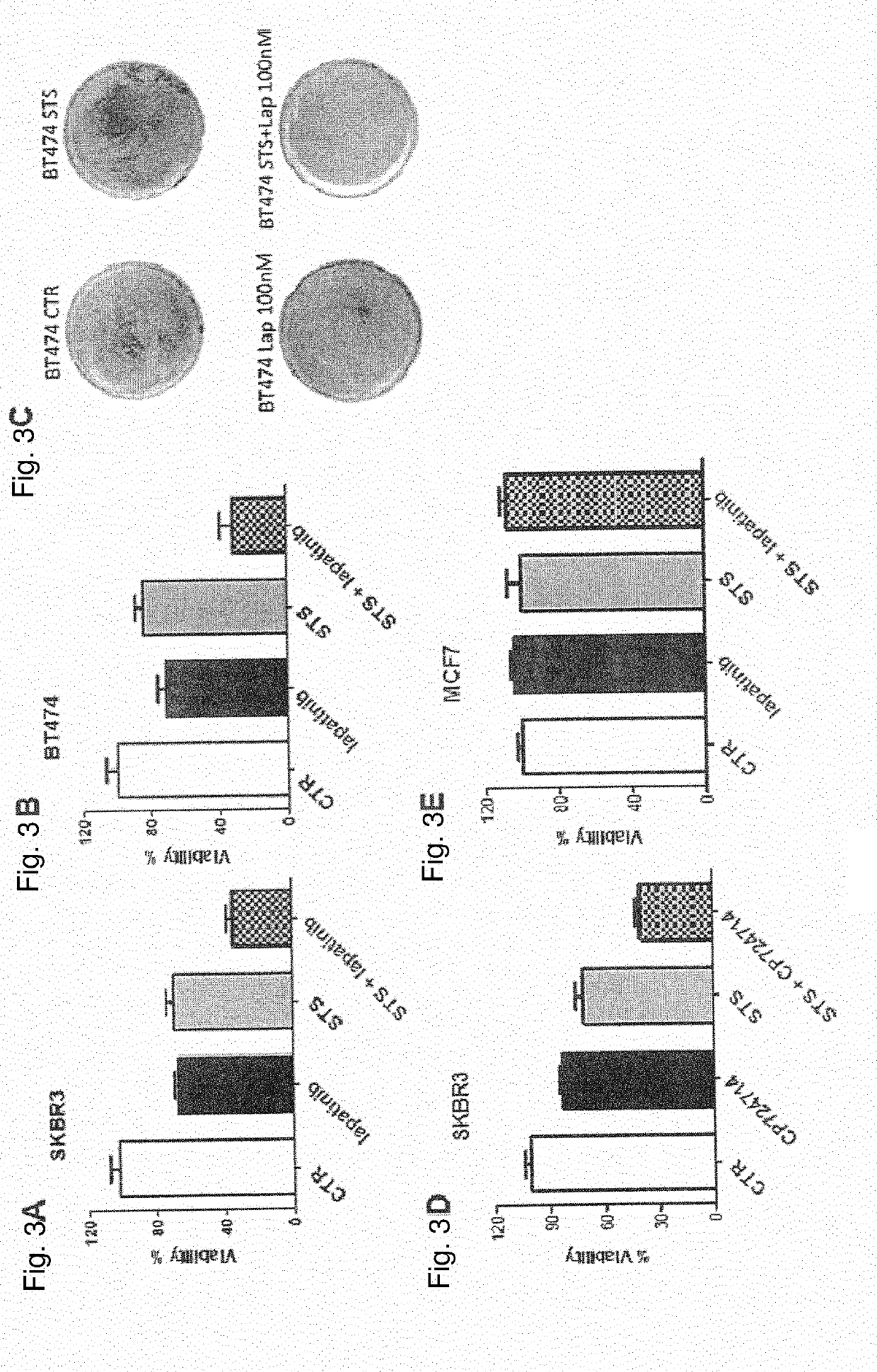Tyrosine kinase inhibitors for use in a method of treating cancer in association with a reduced caloric intake
a tyrosine kinase inhibitor and chemotherapy technology, applied in the field of pharmaceutical industry, can solve the problems of reducing affecting the survival rate of patients, and affecting the effect of chemotherapy, so as to achieve the effect of not being prevented or hindered
- Summary
- Abstract
- Description
- Claims
- Application Information
AI Technical Summary
Benefits of technology
Problems solved by technology
Method used
Image
Examples
Embodiment Construction
[0057]The Applicants performed several experiments to assess whether conditions that mimic the metabolic effects of starvation in vitro (cell culture in the presence of low serum (1% FBS) and low glucose (0.5 g / L) sensitize cancer cells to two TKIs, Crizotinib and Lapatinib, that are commonly used in EML4-ALK+NSCLC and in HER2+ BC (breast cancer cells), respectively.
[0058]With reference to FIGS. 1A and 1B, 3×103 H3122 cells were plated in 96 well plates in regular DMEM medium containing 10% FBS. 24 h later, the cell medium was removed and cells were incubated for 24 h either in the same medium (CTR) or in low-glucose (0.5 g / L) DMEM medium containing 1% FBS (STS). 24 h later cells were treated or not with the indicated concentrations of Crizotinib or TAE382 (TAE). 72 h later, viability was measured with sulforodhamine B-based assays. With reference to FIG. 1C, 105 H3122 cells were plated in 60 mm Petri dishes in regular DMEM medium. 24 h later, the cell medium was removed and cells w...
PUM
 Login to View More
Login to View More Abstract
Description
Claims
Application Information
 Login to View More
Login to View More - R&D
- Intellectual Property
- Life Sciences
- Materials
- Tech Scout
- Unparalleled Data Quality
- Higher Quality Content
- 60% Fewer Hallucinations
Browse by: Latest US Patents, China's latest patents, Technical Efficacy Thesaurus, Application Domain, Technology Topic, Popular Technical Reports.
© 2025 PatSnap. All rights reserved.Legal|Privacy policy|Modern Slavery Act Transparency Statement|Sitemap|About US| Contact US: help@patsnap.com



